I just tested Intel’s Panther Lake chip — 50% faster, breakthrough graphics and ready to power laptops in 2026
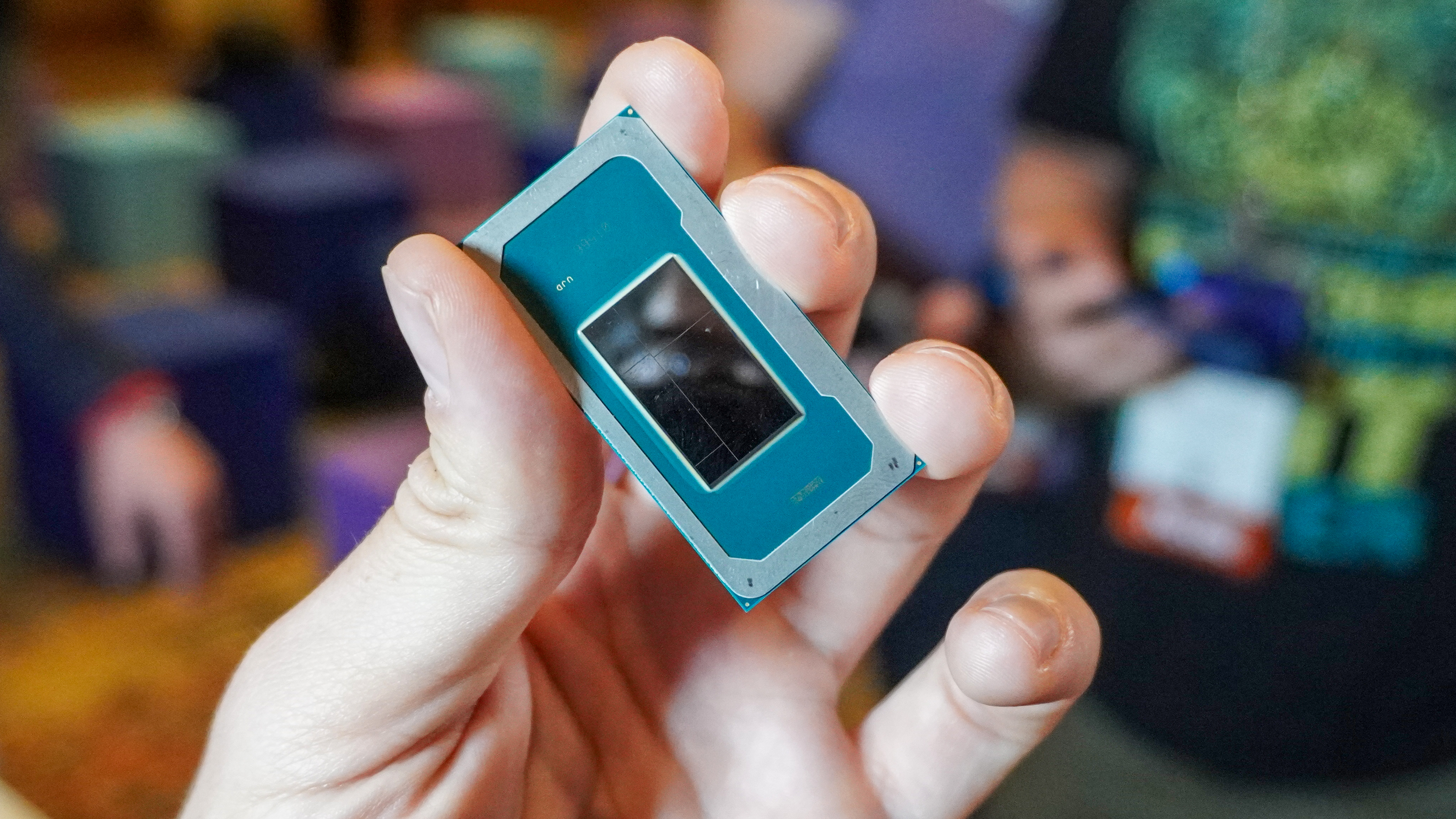
This is a pivotal moment for Intel. Lifelines may have come from the U.S. government and Nvidia, but Team Blue needs to be in fight back mode — which is exactly what the company’s done with Panther Lake, the new chip that will eventually (probably) be known as Intel Core Ultra series 3.
And looking back, the timeline has led up to this moment. Arrow Lake (Intel Core Ultra 200H and HX) brought the performance without the battery life, whereas Lunar Lake (Intel Core Ultra 200V) went hard on battery life at the sacrifice of performance.
Panther Lake brings both of these together, while drastically amping up performance by more than 50% in CPU and GPU prowess, while bringing insane graphics tech to the table. Let me tell you about it.
Intel Panther Lake: Quick takes
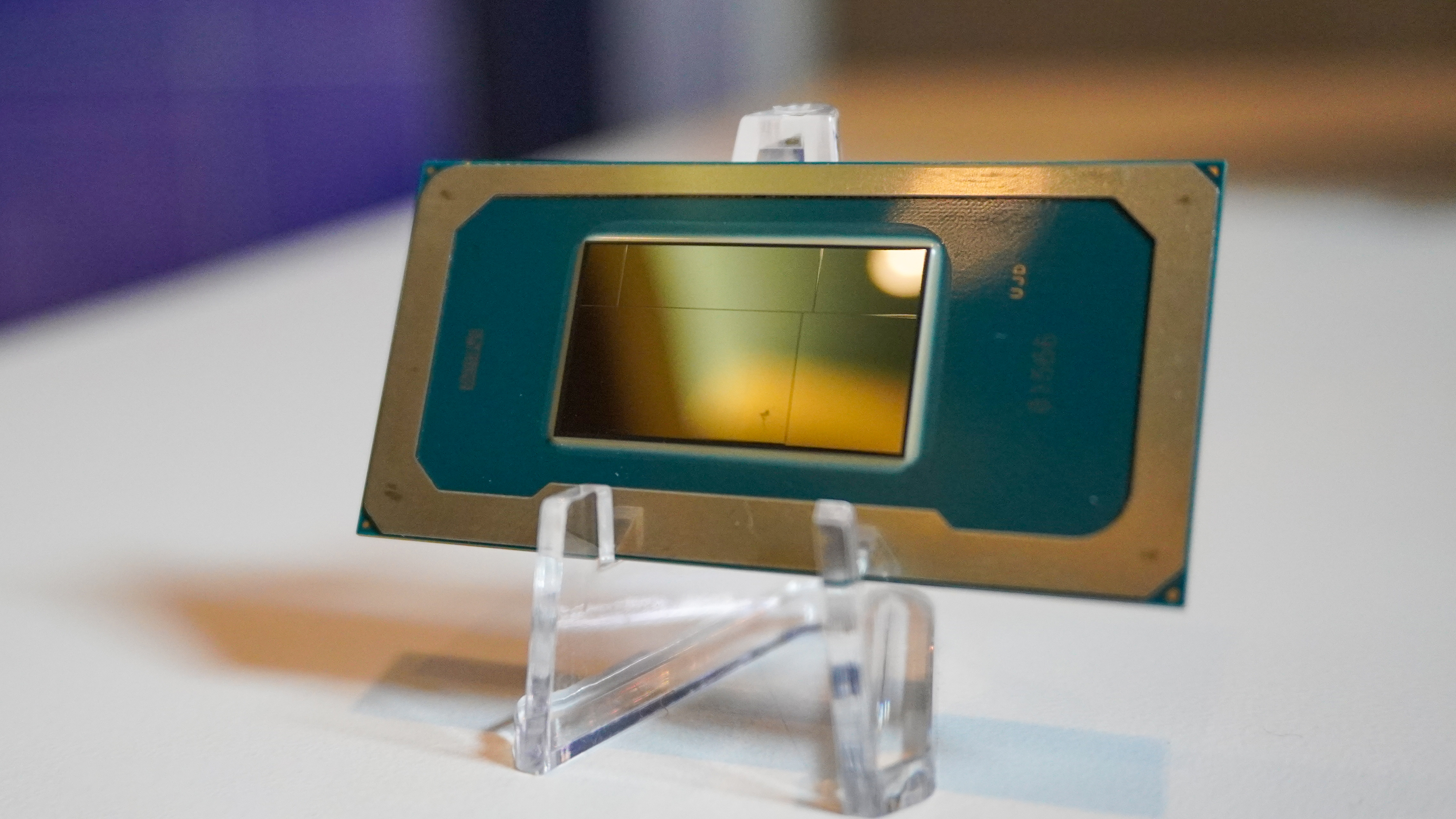
- Core Architecture: Panther Lake utilizes a modular "System of Chips" design built on the Intel 18A node, featuring up to 16 next-generation Cougar Cove P-cores and Darkmont E-cores, clustered for optimized performance and efficiency.
- GPU Changes: The GPU introduces the new Xᵉ3 graphics architecture and scales up to 12 Xᵉ cores and 12 Ray Tracing Units, delivering big performance and featuring an increased 16 MB L2 Cache in the high-end configuration.
- Multi-Thread Performance: Multi-thread performance is boosted by more than 50% versus Lunar Lake and Arrow Lake when operating at similar power levels.
- Single-Thread Power Efficiency (vs. Arrow Lake): It delivers similar single-thread performance with more than 30% less power compared to Arrow Lake.
- GPU performance: The new Xe3 architecture results in 50% more GPU performance compared to Lunar Lake, and achieves 40% higher performance per watt compared to Arrow Lake H. XeSS 3 tech introduces multi-frame generation, which is huge for integrated graphics — 1.5x improvement.
Intel Panther Lake: Specs
Spec | Base configuration (predicted name: Intel Core Ultra 300V series) | Mid-range (Intel Core Ultra 300H series) | High-end (Intel Core Ultra 300HX series) |
|---|---|---|---|
Cores | 8 | 16 | 16 |
Core mix | 4 Cougar Cove P-Cores, 4 Darkmont LP E-Cores | 4 Cougar Cove P-cores, 8 Darkmont E-cores, 4 Darkmont LP E-cores | 4 Cougar Cove P-cores, 8 Darkmont E-cores, 4 Darkmont LP E-cores |
GPU cores | Xe3 architecture: 4 Xe-cores, 4 Ray tracing Units | Xe3 architecture: 4 Xe-cores, 4 Ray tracing Units | Xe3 architecture: 12 Xe-cores, 12 Ray tracing units |
Max RAM speed | LPDDR5x 6800 MT/s | LPDDR5x 8533 MT/s | LPDDR5x 9600 MT/s |
NPU | NPU 5 at 50 TOPS | NPU 5 at 50 TOPS | NPU 5 at 50 TOPS |
IPU | IPU 7.5 image processing unit | IPU 7.5 image processing unit | IPU 7.5 image processing unit |
Port support | Thunderbolt 4, USB 3.2, USB 2.0 | Thunderbolt 4, USB 3.2, USB 2.0 | Thunderbolt 4, USB 3.2, USB 2.0 |
Connectivity | Wi-Fi 7, Bluetooth 6.0 | Wi-Fi 7, Bluetooth 6.0 | Wi-Fi 7, Bluetooth 6.0 |
Meet 18A
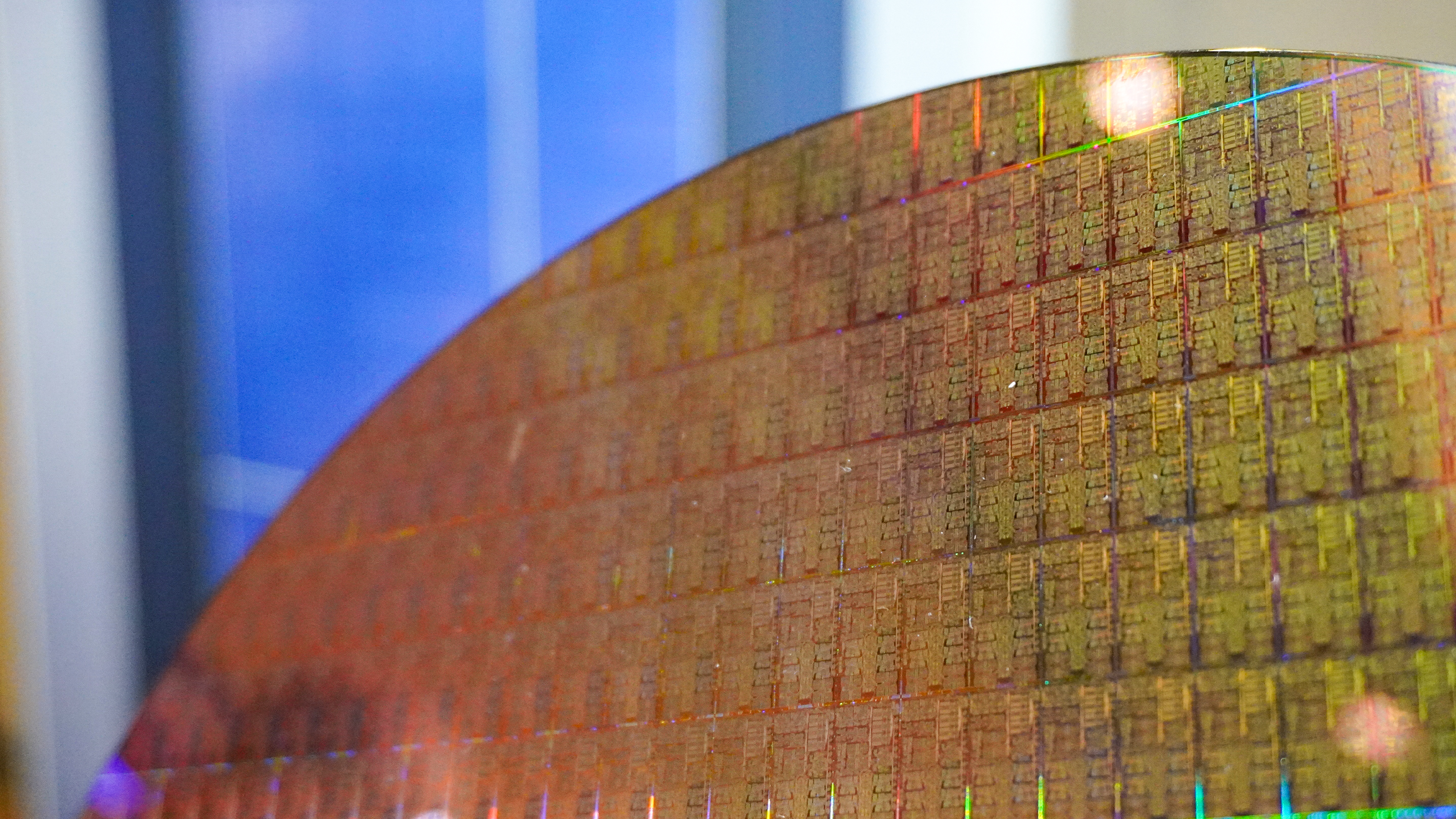
18A is not just another manufacturing step, it's the most advanced chip-making process currently in production in the United States — positioning Intel for a huge leap in CPU performance and efficiency. This 2-nanometer class node is the technological foundation for upcoming CPUs like Panther Lake, and it relies on two revolutionary changes.
This gets technical. We’re talking about the very fabric of how these process nodes are made, because as I’m about to get into, Panther Lake is really all about the numerous overhauls Team Blue has made to deliver big, but let me get into two key pillars of how it's built.
RibbonFET (The ultimate transistor)
- Transistors on a chip are always in two states: on or off. These are all controlled by gates, and in older Intel chips, these only covered some sides of the transistor — leading to power leakage.
- RibbonFet wraps the gate around all sides. Imagine trying to keep water from leaking out of a pipe by only squeezing the top. It still leaks from the sides. RibbonFET is like completely wrapping the pipe from all sides with the control mechanism. This perfect, "all-around" gate control ensures zero leakage.
- That allows for greater control of transistors, and allows Intel to shrink them even further without losing power — specifically a 15% performance-per-watt increase with a 25% power reduction.
Speaking of power…
PowerVia (Fixing silicon traffic jams)
- Instead of taking the traditional route of chip production, which is putting all the signal and power lines on one side of the chip, Intel is moving power delivery to the backside of the chip.
- Think of a multi-story city where power lines and data cables (signal lines) are all running on the same crowded street (the front side of the chip). This creates traffic jams and bottlenecks. PowerVia moves all the heavy power lines to a separate, dedicated highway underneath (the backside of the wafer).
- By making this move, the signal lines up top are now free to spread out, which dramatically reduces bottlenecks and allows Intel chips to be a lot more dense with cores and engines — bumping the chip density up by 1.3x.
Panther Lake takes full advantage of 18A (as you can see in the specs table), and the synergy of these two pillars translates to massive generational improvements.
Get instant access to breaking news, the hottest reviews, great deals and helpful tips.
Best of both worlds
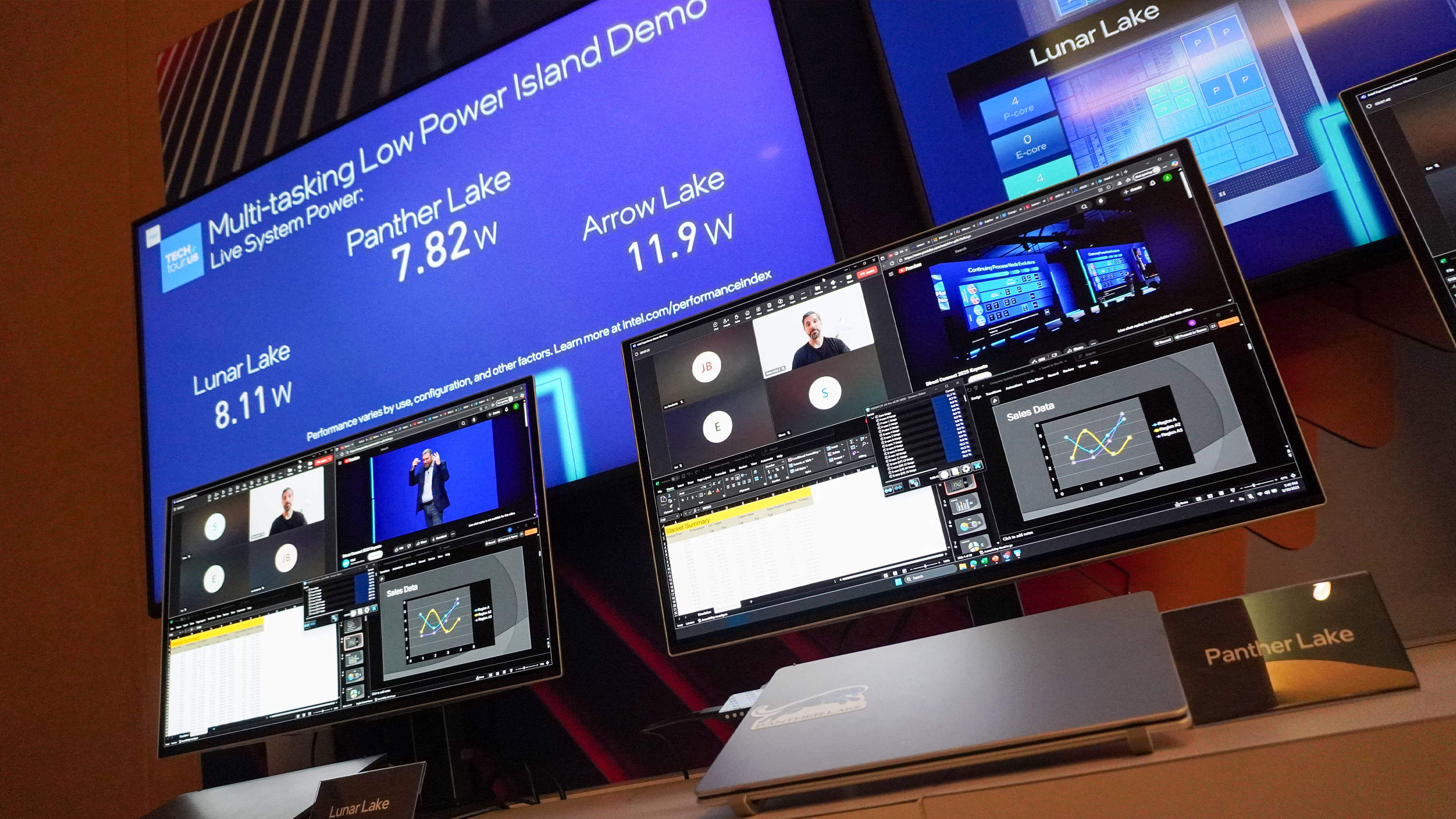
Panther Lake makes a move from being a system on a chip (all the elements threaded together) to a more modular system of chips. You can see how Nvidia could insert itself into this conversation in future silicon with a GPU chiplet of its own!
"We are moving away from system on a chip to system of chips."
— Kevin O’Buckley, Intel Foundry Manager
But that's way further down the line (more on graphics later). Right now, what we have on the compute side of it is a familiar mix of performance and efficiency cores. The Cougar Cove performance cores have been engineered to drive up single-threaded performance, and deal with the high-demand work like games and content creation.
Meanwhile, the Darkmont efficiency cores are on hand and integrated alongside those performance cores to contribute significantly to multi-threaded performance. And for those low-demand tasks that fall into the casual productivity space, that’s where the low power E-cores come in.
There’s also a lot of software trickery at play here — including what’s called the Intel Thread Director. Basically, your Panther Lake chip has a boss that is really smart at looking at the tasks coming in and assigning cores to it.
And all these things lead to two key things: faster performance both when being strained and in more power-efficient moments. Single-threaded performance is more than 10% faster than Lunar Lake and Arrow Lake at similar power levels, and more than 50% faster multi-threaded.
Agentic AI at its core

While the Snapdragon X2 Elite is aimed at packing more TOPS into its NPU (80 to be specific), Intel is focused more on making better use of the surface area.
The 5th generation NPU here has a 40% improvement in TOPS in the area compared to Lunar Lake — combined with the CPU and GPU, that’s a total of 180 TOPS to help with Agentic AI capabilities coming down the line.
And efficiency is the name of the game, as the NPU consumes 10% less power than Lunar Lake and 40% less than Arrow Lake, while also being optimized for the latest ways AI workloads are conducted, such as Floating Point.
Huge GPU gains
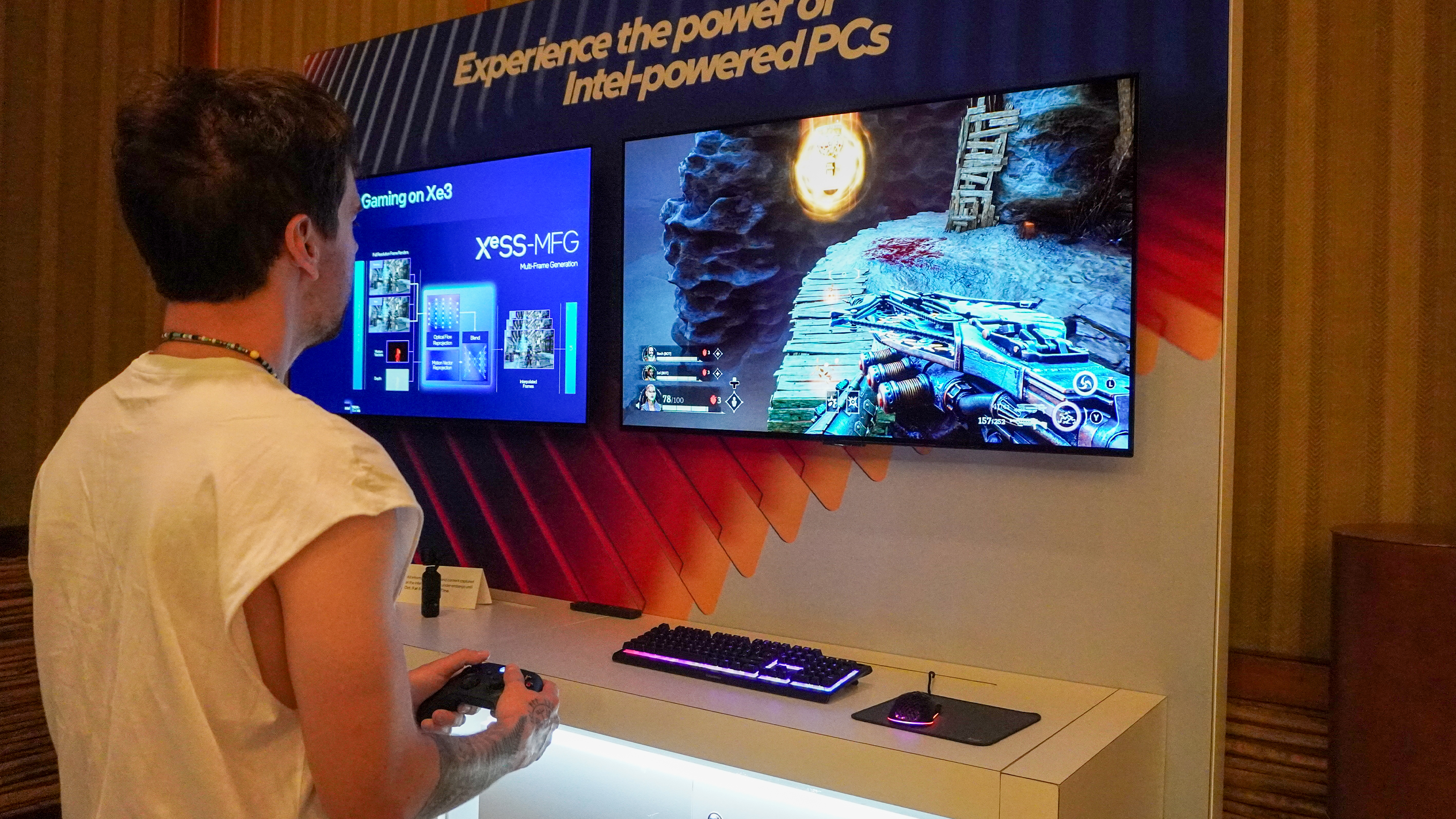
Now for the fun part. The GPU has undergone a huge upgrade here, as it is now built on the Xe3 core architecture — driving both drastic improvements in efficiency and performance. Specifically, we're talking more than 50% faster than Lunar Lake, and 40% better performance-per-watt when compared to Arrow Lake.
These are significant numbers for GPU-intensive workloads like content creation, but the magic really starts to happen when you go gaming with it.
Intel was already on a great track with Lunar Lake (I loved the most recent driver update that unlocked more performance in the MSI Claw 8 AI+). But with Panther Lake, Intel is promising a 1.5x uplift in gaming performance, and that is Intel being “conservative” in their own words.
XeSS tech has also gotten an upgrade, too, and multi-frame generation is coming. If you’re not familiar with this tech since Nvidia launched it with RTX 50 series, the GPU will render one frame and use AI to predict the next three — essentially offering far smoother frame rates.
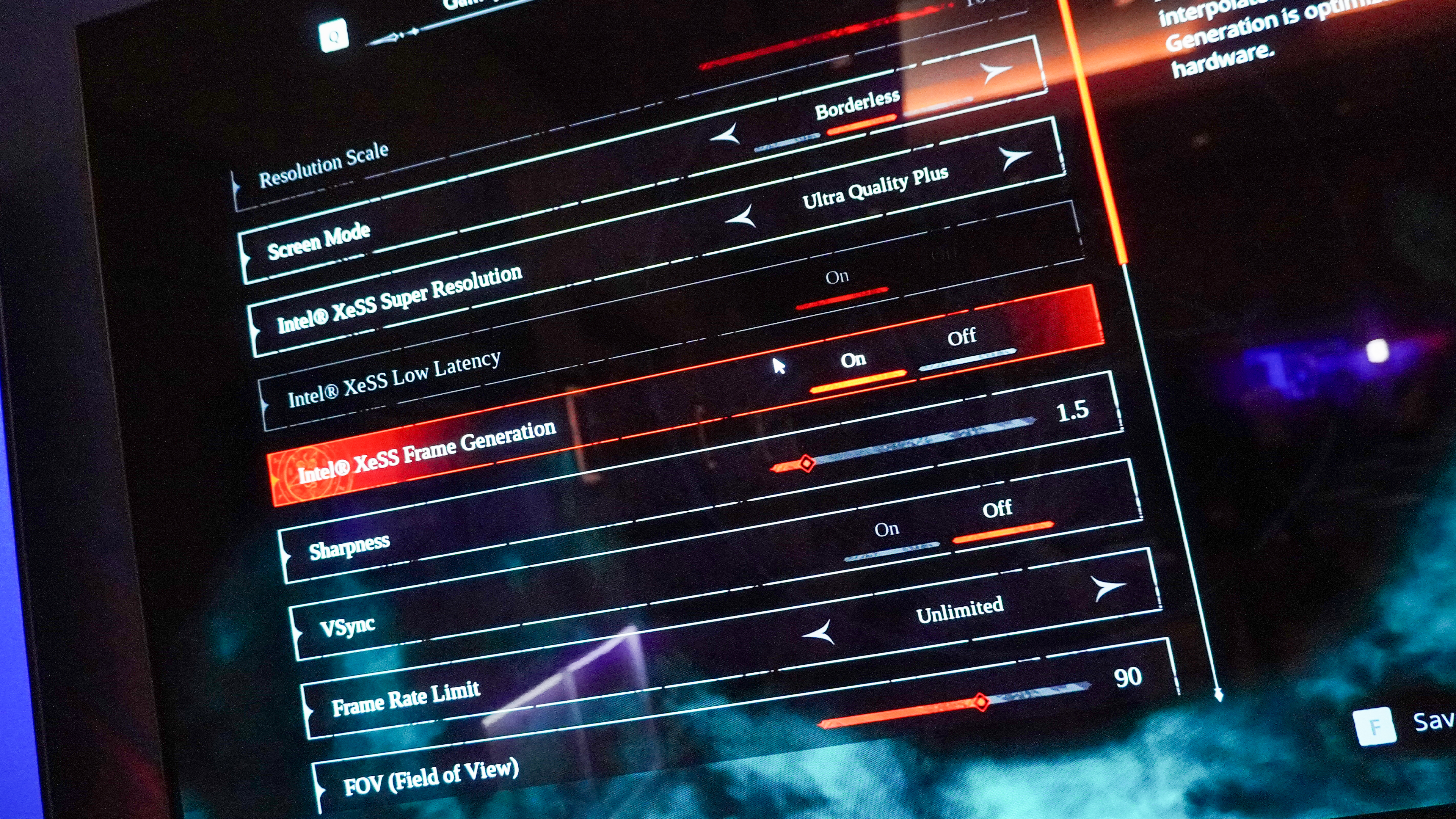
To have this in integrated graphics is, put simply, a bonkers power-up. On the demo units running at 45 watts, I saw Painkiller running at 220 FPS and Dying Light 2 at 140 FPS. Then, with 12 ray tracing units, these could very well overcome Intel’s old weakness in ray tracing.
It’s worth noting that since there isn’t any competitive testing, we aren’t able to confirm how Intel’s new GPU tech fares against AMD’s Strix Halo platform (the chip you’d find in the Framework Desktop).
In my mind, given the ludicrous specs of the Ryzen AI Max+ 395, Team Blue’s Panther Lake isn’t stretching to compete with this — that’s where the Nvidia partnership will come in. What we have here is more of a value unlocker to give you an improved price to performance.
The nice-to-haves

Then there’s the new image processing unit, which Intel is calling IPU 7.5. Basically, this covers what I call “just laptop things” — the things you don’t even think about, but also massively appreciate when they’re done well.
For example, better webcam support (you've got support for up to 16MP picture quality, and 1080p running at 120 FPS), AI-driven tone mapping for more lifelike color and contrast, and AI noise reduction to smooth that image.
But probably most eye-catching (literally) for me is the enhanced HDR. Processing the signals for that kind of content can take a toll on the chip’s power, but through hardware accelerated staggered HDR, the system can do it far more efficiently at a fraction of the power.
Once again, another series of small changes that make for a big difference.
Made in America

And I’ve seen these being made in FAB 52 — the latest foundry added to Intel’s massive production center in Phoenix, Arizona. There’s a lot of unanswered questions about these at the moment, because we just got a selection of demos that show Panther Lake in the best light. But early impressions are incredibly encouraging.
I get the feeling that Intel’s 18A is the key that can unlock a lot of promise and progress to a company that has been desperately looking for a “win.” Beyond any of our benchmarking rigmorale (you can expect a lot of Panther Lake laptop and handheld reviews on Tom’s Guide when they launch)
Bringing the power efficiency of Lunar Lake together with the raw performance of Arrow Lake, and supercharging those cores alongside a banger of an integrated GPU does make me incredibly excited for the future of laptops, handhelds and mini PCs.
Follow Tom's Guide on Google News, or add us as a preferred source, to get our up-to-date news, analysis, and reviews in your feeds. Make sure to click the Follow button!
More from Tom's Guide
- I benchmarked the Snapdragon X2 Elite Extreme — here's how it compares to Apple M4, Intel Core Ultra 9 and more
- M5 MacBook Pro — all the rumors we’ve heard so far
- Nvidia N1X CPU: Everything we know so far

Jason brings a decade of tech and gaming journalism experience to his role as a Managing Editor of Computing at Tom's Guide. He has previously written for Laptop Mag, Tom's Hardware, Kotaku, Stuff and BBC Science Focus. In his spare time, you'll find Jason looking for good dogs to pet or thinking about eating pizza if he isn't already.
You must confirm your public display name before commenting
Please logout and then login again, you will then be prompted to enter your display name.










